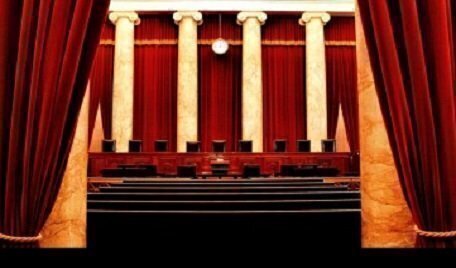At first glance, climate change and vaccine mandates seem to have nothing in common, but the two are linked in a U.S. Supreme Court case with the potential to unravel many of the nation’s health and safety regulations.
 The link is a nerdy sounding concept known as the major questions doctrine. The doctrine is “justice-made” and until recently, was not used with any regularity by the Supreme Court and other courts.
The link is a nerdy sounding concept known as the major questions doctrine. The doctrine is “justice-made” and until recently, was not used with any regularity by the Supreme Court and other courts.
But the Trump Administration and conservative lawyers and judges re-energized it as they saw in the doctrine a potent tool to cut back the growth of regulations by federal agencies, or what is called “the administrative state.” And Justice Neil Gorsuch appears to be its biggest supporter on the Roberts Court.
Next week, the doctrine is expected to figure in what may be the most consequential environmental case before the justices in 15 years. The case, West Virginia v. Environmental Protection Agency (EPA), is at its core, about the scope of EPA’s authority to regulate under the Clean Air Act. The case is critical to the effort to address climate change because the challenge, brought by Republican-led states and coal companies, is to EPA’s authority to regulate greenhouse gas emissions from existing coal-fired electric utility generating units.
The case will be argued on February 28. The arguments will be live streamed from the court’s web page which can be found at: https://www.supremecourt.gov/
Congress, of course, lacks the expertise, time, and ability to legislate in every area of need facing the nation. And so it delegates some of its lawmaking power to federal agencies that do have the expertise and ability to craft regulations addressing certain problems and needs. The major questions doctrine says that Congress must “speak clearly if it wishes to assign to an agency decisions of vast economic and political significance.” The doctrine’s opposite is another justice-made doctrine, so-called Chevron deference, named after a 1984 Supreme Court decision which said that if a federal statute is ambiguous, courts should defer to an agency’s interpretation of its own implementing statute if that interpretation is essentially reasonable.
Several justices, including Gorsuch, have been critical of Chevron deference. Gorsuch once wrote it “seems no less than a judge-made doctrine for the abdication of the judicial duty.” It is not surprising that he and others critical of Chevron deference are attracted to the major questions doctrine. Gorsuch has said the doctrine “ensures that the national government’s power to make the laws that govern us remains where Article I of the Constitution says it belongs—with the people’s elected representatives.”
The major questions doctrine figured most famously in the Supreme Court’s 2000 decision on tobacco regulation by the Food and Drug Administration. In FDA v. Brown & Williamson, the justices refused to defer to the FDA on its authority to regulate tobacco as a drug. The doctrine seemed moribund after that but surfaced again in 2014 when the justices declined to defer to the IRS’ interpretation of certain tax provisions in the Affordable Care Act.
But the pandemic has given the doctrine new life. In August 2021, a divided court ruled that an extension of the Covid-related eviction moratorium exceeded the authority of the CDC under the Public Health Act. The majority did not use the magic words: major questions doctrine. But it did state the definition, writing: “We expect Congress to speak clearly when authorizing an agency to exercise powers of ‘vast economic and political significance.’”
And most recently, the doctrine figured in the justices’ divided decision holding that the Occupational Safety & Health Administration did not have the authority to require vaccination or testing of employees of large employers. Once again, the majority did not explicitly state it was applying the major questions doctrine, but Gorsuch, in a concurring opinion, wrote that the court’s decision “rightly applies the major questions doctrine.”
So what’s the big deal? The doctrine appears to be a reasonable check on runaway agency regulation. The doctrine does have its critics. Some argue it actually interferes with Congress’ legislative function and gives too much power to courts. The justices have not said what agency actions are of such political and economic significance as to trigger the doctrine or what type of “clear” statement by Congress is sufficient for courts to defer to an agency. That brings us back to next week’s arguments in West Virginia v. EPA.
There may be a serious problem with the challengers’ right to bring this case. If the justices find there is no “standing,” the case will be, in the words of one environmental lawyer, a “nothingburger.” If the justices reach the technical issue of EPA’s authority under a key provision of the Clean Air Act, the outcome will be one of the most important decisions of the term because of its impact on the nation’s effort to confront climate change.
But if the court rules broadly on the application of the major questions doctrine, a decision could affect the operation of federal agencies across the board and their ability to address the nation’s problems.
Marcia Coyle is a regular contributor to Constitution Daily and the Chief Washington Correspondent for The National Law Journal, covering the Supreme Court for more than 20 years.







